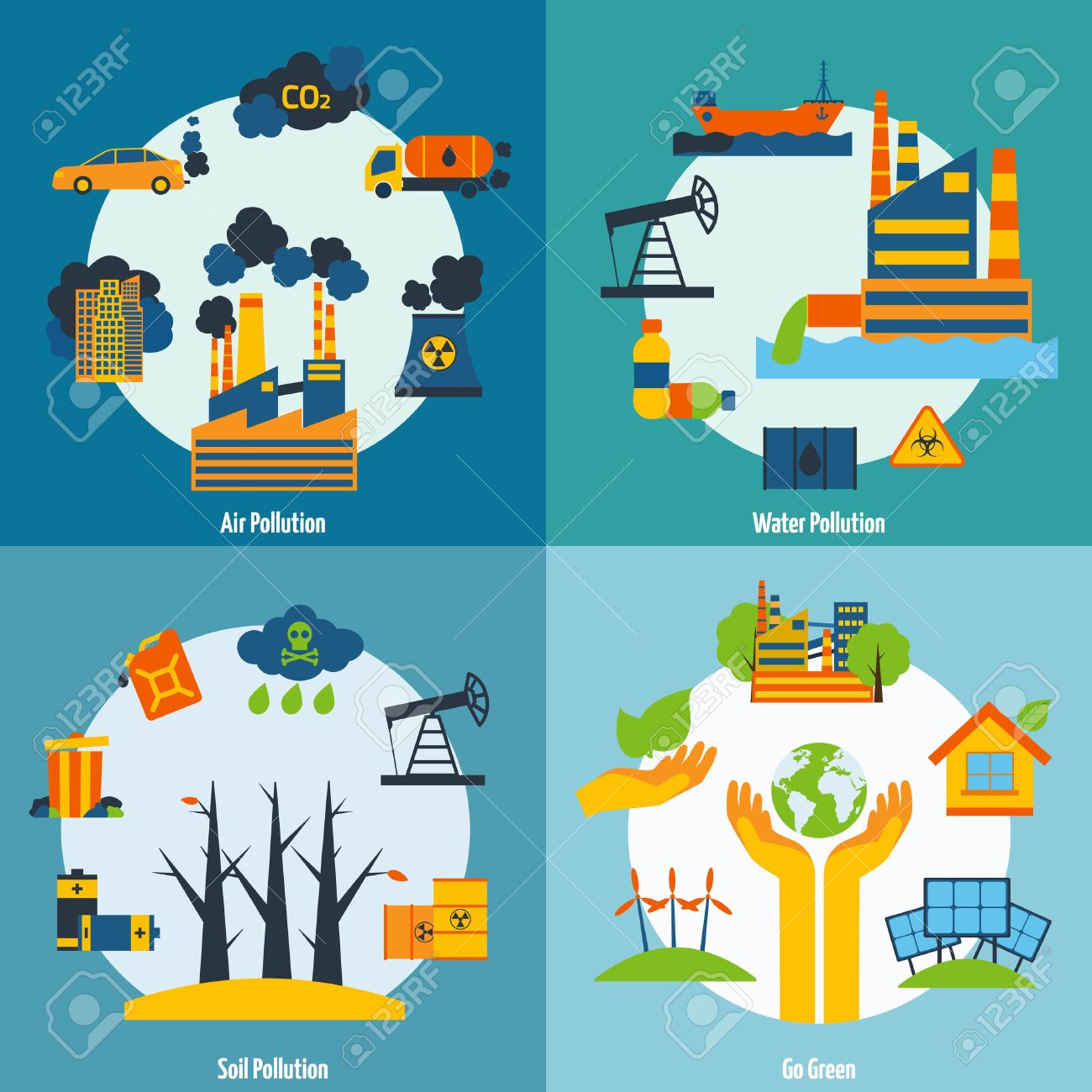Township Water Contamination: Causes, Concerns, And Solutions

Table of Contents
Causes of Township Water Contamination
Township water contamination stems from a variety of sources, often interacting in complex ways. Understanding these origins is crucial for developing effective prevention and mitigation strategies.
Industrial Pollution
Industrial activities frequently release pollutants into the environment, posing a serious risk to township water sources. Industrial wastewater discharge, often containing heavy metals, chemicals, and other toxins, can directly contaminate surface water bodies like rivers and lakes. Hazardous waste spills, whether accidental or deliberate, can severely impact both groundwater and surface water, leading to long-term contamination.
- Examples of Industrial Pollutants and Their Effects:
- Heavy metals (lead, mercury, cadmium): Neurological damage, kidney failure, cancer.
- Chemical solvents (trichloroethylene, benzene): Liver and kidney damage, leukemia.
- Pesticides and herbicides: Endocrine disruption, developmental problems.
- Regulations and Enforcement: While regulations exist to govern industrial wastewater discharge, enforcement can be challenging, particularly in smaller townships with limited resources. Stricter regulations and improved monitoring are essential to prevent industrial pollution from contaminating township water supplies.
Agricultural Runoff
Agricultural practices, while essential for food production, can significantly contribute to Township Water Contamination. Pesticides, fertilizers, and animal waste from farms can leach into groundwater or run off into surface waters, contaminating drinking water sources.
- Types of Agricultural Pollutants and Their Pathways:
- Nitrates from fertilizers: Eutrophication (excessive algae growth), oxygen depletion in water bodies.
- Pesticides: Harm to aquatic life, potential human health risks through drinking water contamination.
- Animal waste: Bacterial contamination, high levels of pathogens.
- Sustainable Agricultural Practices: Implementing sustainable practices like conservation tillage, cover cropping, and integrated pest management can significantly reduce agricultural runoff and mitigate the risk of water contamination.
Septic System Failures
Many townships rely on septic systems for wastewater treatment. However, malfunctioning septic systems can lead to groundwater contamination with untreated sewage, posing serious health risks.
- Signs of Septic System Failure and Consequences:
- Slow draining sinks and toilets.
- Gurgling sounds from drains.
- Sewage backups into homes or yards.
- Contamination of groundwater with pathogens (bacteria, viruses).
- Proper Septic System Management: Regular maintenance, proper installation, and adherence to regulations are vital for preventing septic system failures and protecting township water supplies.
Natural Sources of Contamination
Some naturally occurring substances can contaminate groundwater, presenting a challenge to township water safety. Arsenic and radon are examples of naturally occurring contaminants that can pose significant health risks.
- Geographic Areas and Health Risks: Certain geological formations can naturally contain high levels of arsenic or radon, necessitating careful water treatment. Long-term exposure to these contaminants can lead to various health problems.
- Mitigation Strategies: Water treatment methods, such as reverse osmosis or activated carbon filtration, can effectively remove arsenic and radon from drinking water.
Concerns Related to Township Water Contamination
The consequences of Township Water Contamination extend far beyond immediate health concerns. The impacts are multifaceted and far-reaching.
Public Health Risks
Consuming contaminated water can lead to a range of waterborne diseases and long-term health issues. Children, the elderly, and those with compromised immune systems are particularly vulnerable.
- Waterborne Diseases and Long-Term Effects: Diarrhea, cholera, typhoid fever, and other infections can result from contaminated water. Long-term exposure to certain contaminants can lead to chronic diseases like cancer and neurological disorders.
- Statistics on Waterborne Illness Outbreaks: Data highlighting outbreaks linked to contaminated water underscores the severity of this public health threat.
Economic Impacts
The economic burden of Township Water Contamination is substantial. Townships may face significant costs associated with water treatment, healthcare expenses for those affected by contaminated water, and decreased property values.
- Costs of Water Treatment and Healthcare: Cleaning up contaminated water and treating health problems caused by contaminated water can strain township budgets and healthcare systems.
- Impact on Tourism and Businesses: Contaminated water can deter tourism and damage the reputation of businesses dependent on clean water resources.
Environmental Damage
Contaminated water doesn't just impact human health; it wreaks havoc on the environment. Aquatic ecosystems are severely affected, leading to loss of biodiversity and disruptions to natural water cycles.
- Impact on Aquatic Ecosystems: Pollutants in water bodies harm fish, other aquatic life, and overall ecosystem health.
- Disruption of Natural Water Cycles: Contaminated water affects the balance of natural processes, impacting the availability of clean water for all.
Solutions for Township Water Contamination
Addressing Township Water Contamination requires a multi-pronged approach involving technological solutions, regulatory changes, and community engagement.
Water Treatment and Purification
Various water treatment methods can effectively remove contaminants from water sources. The choice of method depends on the type and level of contamination.
- Filtration, Disinfection, Reverse Osmosis: These are commonly used methods to ensure safe drinking water. Reverse osmosis effectively removes a wide range of contaminants, but can be more expensive.
- Cost Considerations and Suitability: The cost-effectiveness and suitability of different treatment methods need to be carefully assessed based on the specific contaminants present and the resources available to the township.
Improved Wastewater Management
Effective wastewater management is crucial to prevent pollution from reaching water sources. This includes upgrading wastewater treatment plants and enforcing stricter regulations on industrial and domestic wastewater discharge.
- Wastewater Treatment Plants and Regulations: Modern wastewater treatment plants can significantly reduce the level of pollutants in wastewater before it is released into the environment. Stricter enforcement of regulations is essential.
Sustainable Agricultural Practices
Implementing sustainable agricultural practices can minimize agricultural runoff and protect township water resources.
- Conservation Tillage, Buffer Strips, Integrated Pest Management: These practices reduce soil erosion, minimize pesticide use, and filter pollutants before they reach water bodies.
Public Awareness and Education
Educating the public about the importance of water conservation and responsible water use is essential for preventing water contamination.
- Public Awareness Campaigns and Educational Programs: Public awareness campaigns can raise awareness of the risks of water contamination and encourage responsible behavior. Educational programs can teach residents how to protect their water sources.
Regular Water Testing and Monitoring
Regular water quality testing and monitoring are essential to identify and address potential contamination issues promptly.
- Frequency of Testing and Parameters to be Monitored: Regular testing should be carried out to ensure water quality standards are met. Different parameters need to be monitored depending on the potential sources of contamination.
- Role of Local Authorities: Local authorities play a crucial role in ensuring water quality testing is conducted effectively and regularly.
Conclusion: Protecting Our Townships from Water Contamination
Township Water Contamination is a serious threat that demands immediate attention. By understanding the causes – industrial pollution, agricultural runoff, septic system failures, and natural sources – and addressing the resulting concerns – public health risks, economic impacts, and environmental damage – we can collectively work towards solutions. Implementing effective water treatment, improving wastewater management, promoting sustainable agriculture, raising public awareness, and ensuring regular water testing are critical steps towards preventing township water contamination and ensuring safe township water for future generations. Learn more about water quality in your township, participate in local initiatives to improve water quality, and report any suspected water contamination to the relevant authorities. Let's work together to prevent township water contamination and address township water issues proactively, building resilient and healthy communities.

Featured Posts
-
 How Apple Watches Are Impacting Nhl Referee Performance
May 16, 2025
How Apple Watches Are Impacting Nhl Referee Performance
May 16, 2025 -
 Kid Cudis Personal Items Sell For Staggering Sums At Auction
May 16, 2025
Kid Cudis Personal Items Sell For Staggering Sums At Auction
May 16, 2025 -
 Keine Streiks Mehr Bei Der Bvg Die Einigung Im Ueberblick
May 16, 2025
Keine Streiks Mehr Bei Der Bvg Die Einigung Im Ueberblick
May 16, 2025 -
 Padres Reach 10 Wins First Dominant Victory Over Athletics
May 16, 2025
Padres Reach 10 Wins First Dominant Victory Over Athletics
May 16, 2025 -
 Students Describe The Gsw Lockdown What Could Have Gone Wrong
May 16, 2025
Students Describe The Gsw Lockdown What Could Have Gone Wrong
May 16, 2025
